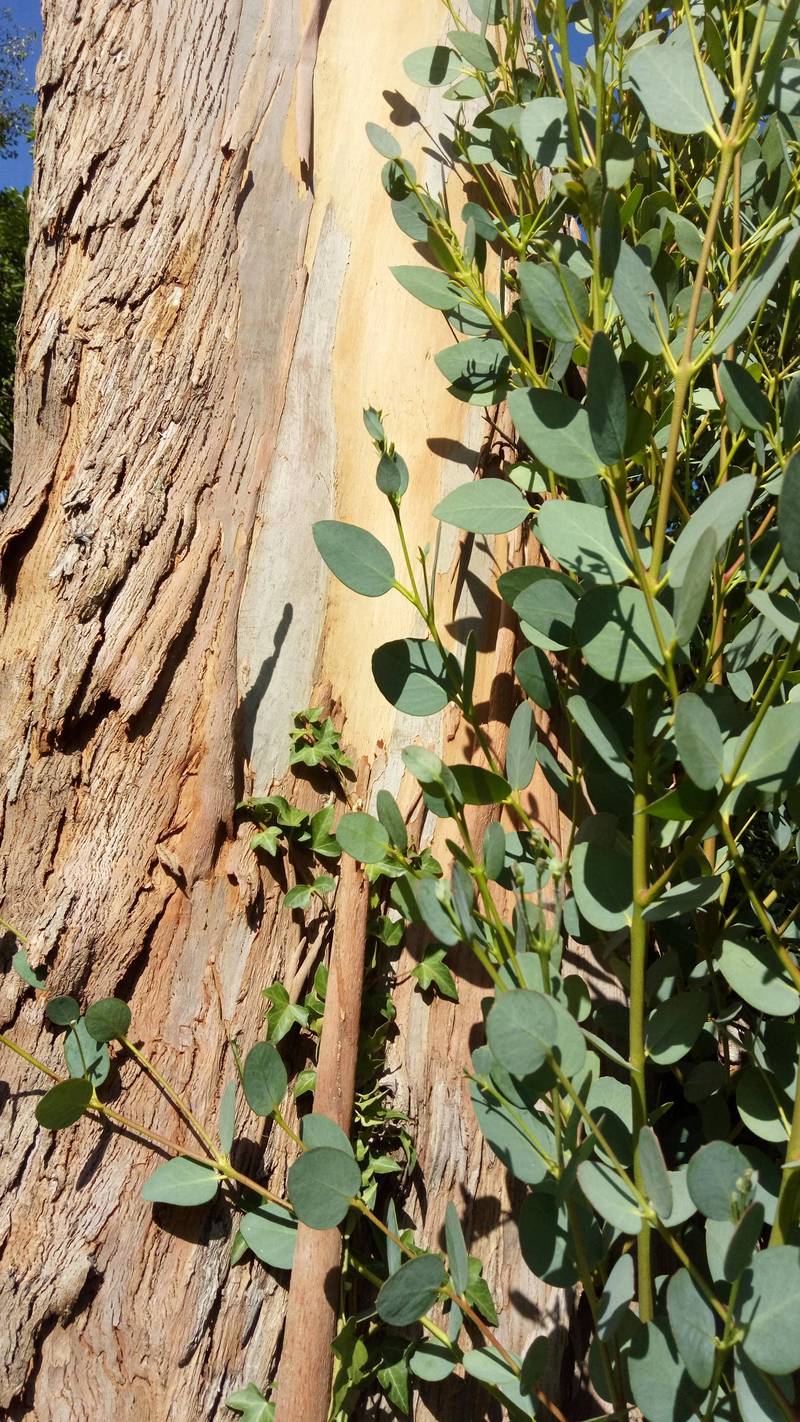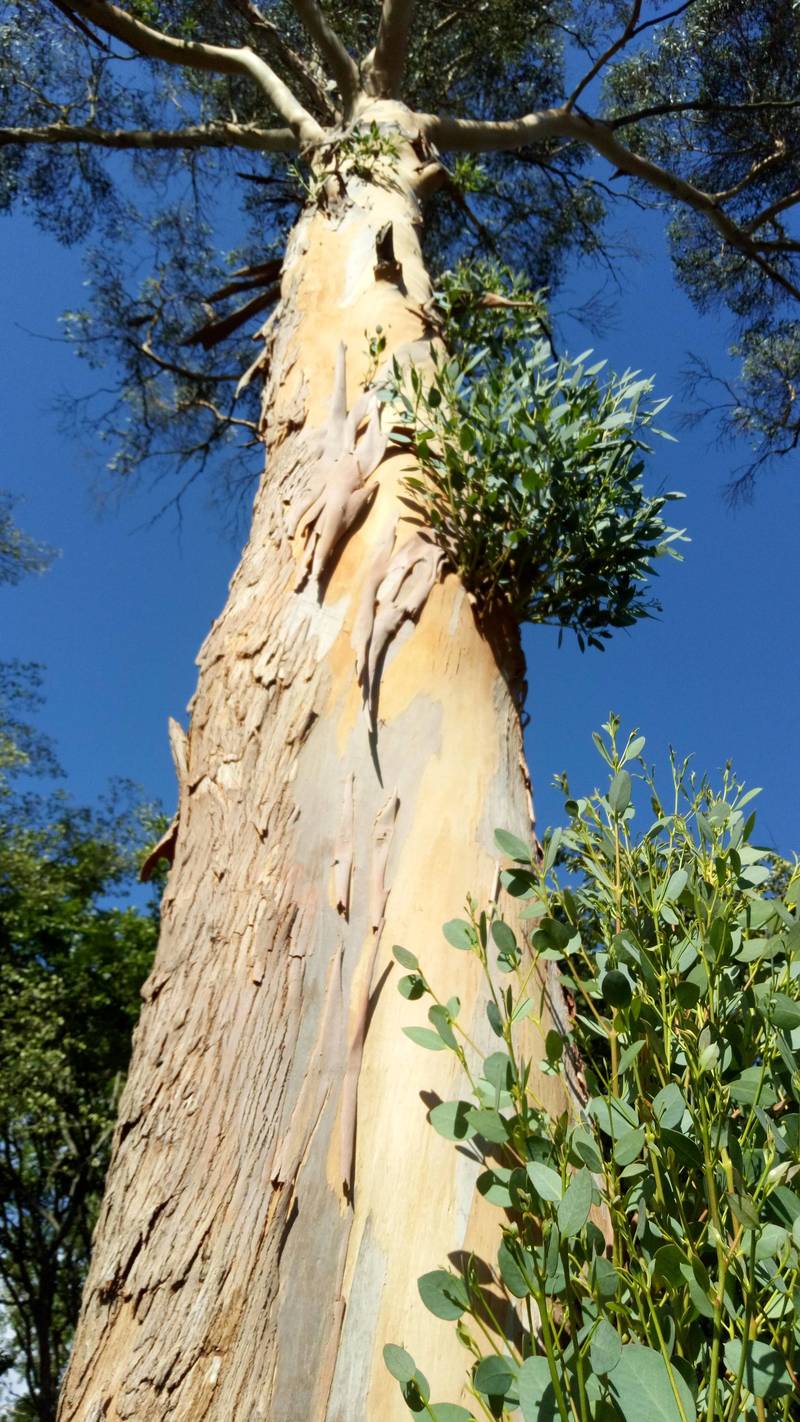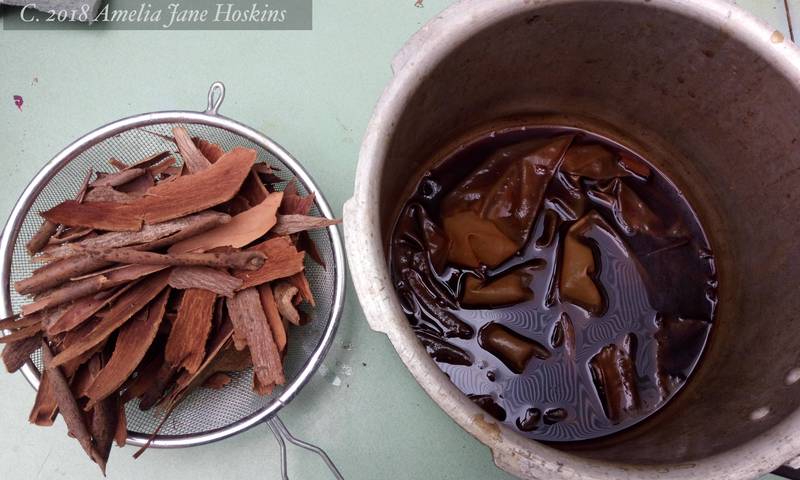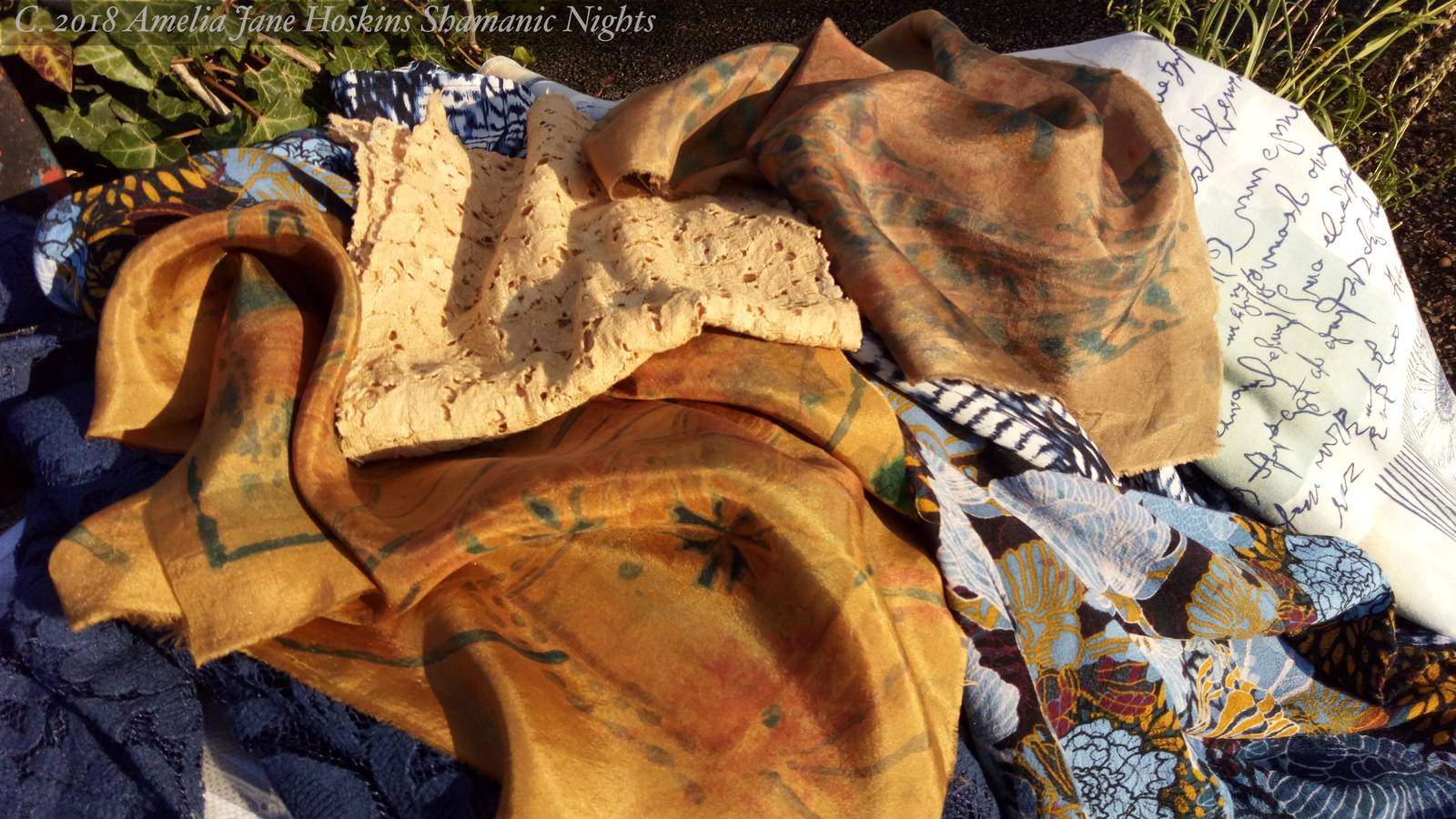Rosemary Simple and Iron
Rosemary Dyed Silk (Ahimsa)
Mustard yellow, fairly strong after overnight soaking in dye bath.
Dye bath was boiled up with rosemary leaves and flowers, and few twigs. Simmered for an hour, then left overnight before using.
Rosemary Dye Bath with Iron
After dying Ahimsa silk yellow, iron was added to dyebath. About a tablespoon of ferrous sulphate powder and tablespoon of iron water (from rusty nails). Wool previously pale yellow from first dye bath, turned dark blue green; then dried greyed olive tone.
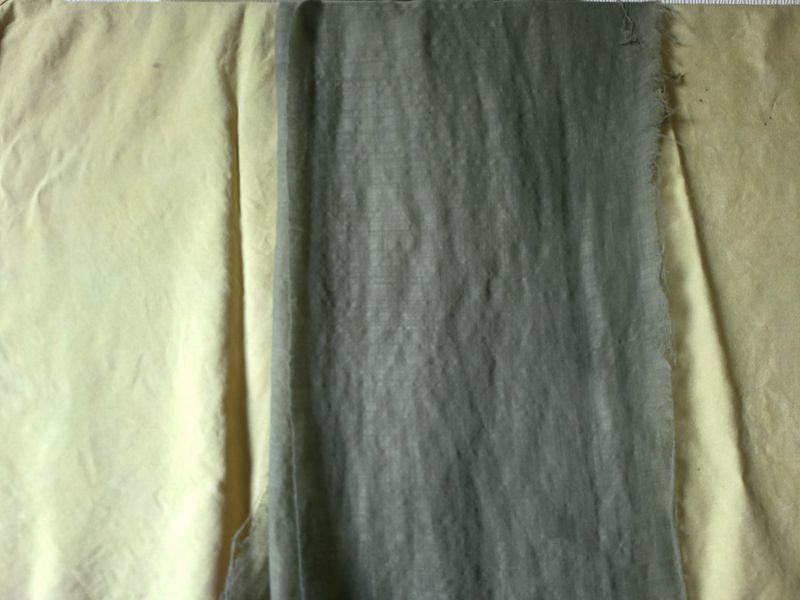
WOOL SCARF TULIPS (Rosemary and iron dyed above)
PAINTED with natural dyes and BLEACHED with LEMON JUICE
Fine wool scarf painted on and bleached. Tulips bleached with lemon juice. Dark leaves have soya milk painted on the shape area first; when dried, dark woad dye (from jar of original mix) is added. Leaves without soya milk base (brown) show bleeding over wool. Soya lines within tulip petals (second end) before painting dye over.
Experiment, unsteamed as yet. Piece will be finished and left for weeks before steaming. Wool is very open weave, fine, so colouring is experimental. If the soya base under design shapes produces a good fixed colour, with a clear defining outline, after steaming, it will be very useful for painting designs on other wool lengths already dyed with natural dyes.













